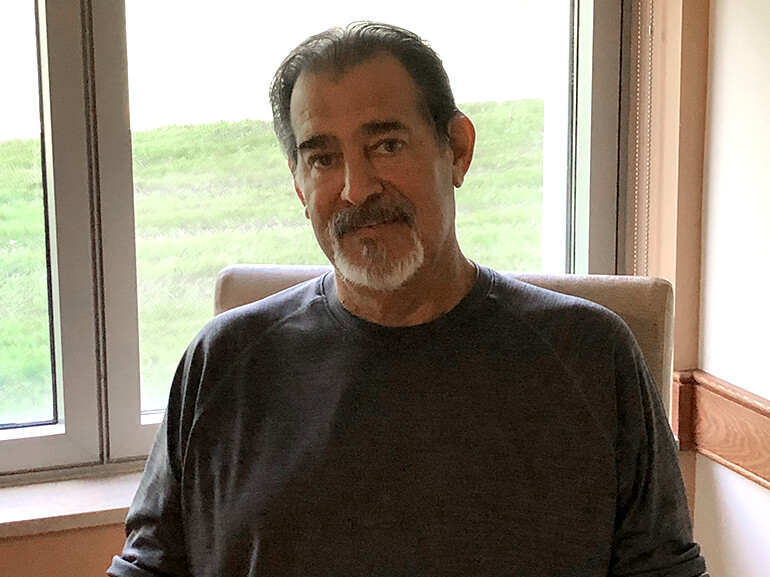Mark's Story

Multidisciplinary care helps an early COVID survivor recover
Mark Nicholas, 62, can’t be certain where he contracted COVID-19; but by mid-March, Mark and his wife began experiencing its telltale symptoms.
Over four days, the slight cough, fever and body aches intensified. He drove to a testing center and confirmed the diagnosis. On March 26, a chest x-ray revealed pneumonia. The couple’s daughter gave them a monitor to gauge oxygen rates.
Two days later, Mark’s oxygen level dropped and fever spiked. His wife drove him to the emergency room. The last thing he remembers is walking through its doors.
For almost a month, Mark fought to survive. He was placed on a ventilator, feeding tube and airway support. Failing kidneys required dialysis.
Slowly, Mark began winning the fight. On April 19, he liberated from the ventilator and transitioned to a high-flow air mask. He was weak and unable to care for himself. That evening, he chatted by video call with his wife and family.
Three days later, he transferred to Select Specialty Hospital – Laurel Highlands to continue recovery.
A physician-led team, including nurses and therapists, created a plan to get Mark home.
It took a day or two for Mark to comprehend where he was and what was going on. The retired mail carrier was shocked at his weakened condition. He’d gone from walking an entire route without fatigue to needing two people to stand.
Respiratory therapists monitored Mark’s airflow and coached him through breathing exercises designed to increase stamina and endurance.
Physical and occupational therapists deployed a mobility program, encouraging Mark to move his arms, legs and roll in bed. Growing stronger with each attempt, he graduated to sitting on the bed’s edge. After that, Mark transitioned to a chair, and worked with occupational therapists on relearning how to eat.
In time, his kidneys healed and dialysis was discontinued.
Day-by-day, strength returned. He stood without help and practiced walking a few feet with a walker. Pushing to go farther each time, Mark walked independently just before departing on May 8 for an inpatient rehabilitation hospital.
After just five days there, Mark was strong enough to return home. A “parade” of care team members flooded the halls to clap and wish him well.
At the house, neighbors stood at a distance with balloons and waved. His children and other family members showed up with welcome signs, calling out love and support from six feet away.
Mark continued home therapy for several weeks.
These days, he’s nearly back to normal, though vestiges of the illness’ symptoms still crop up.
“I will be forever grateful for the dedicated health care providers and for the constant prayers and support I received from friends and family,” he said.